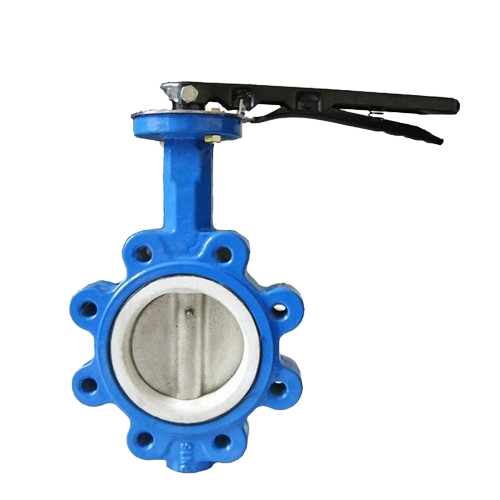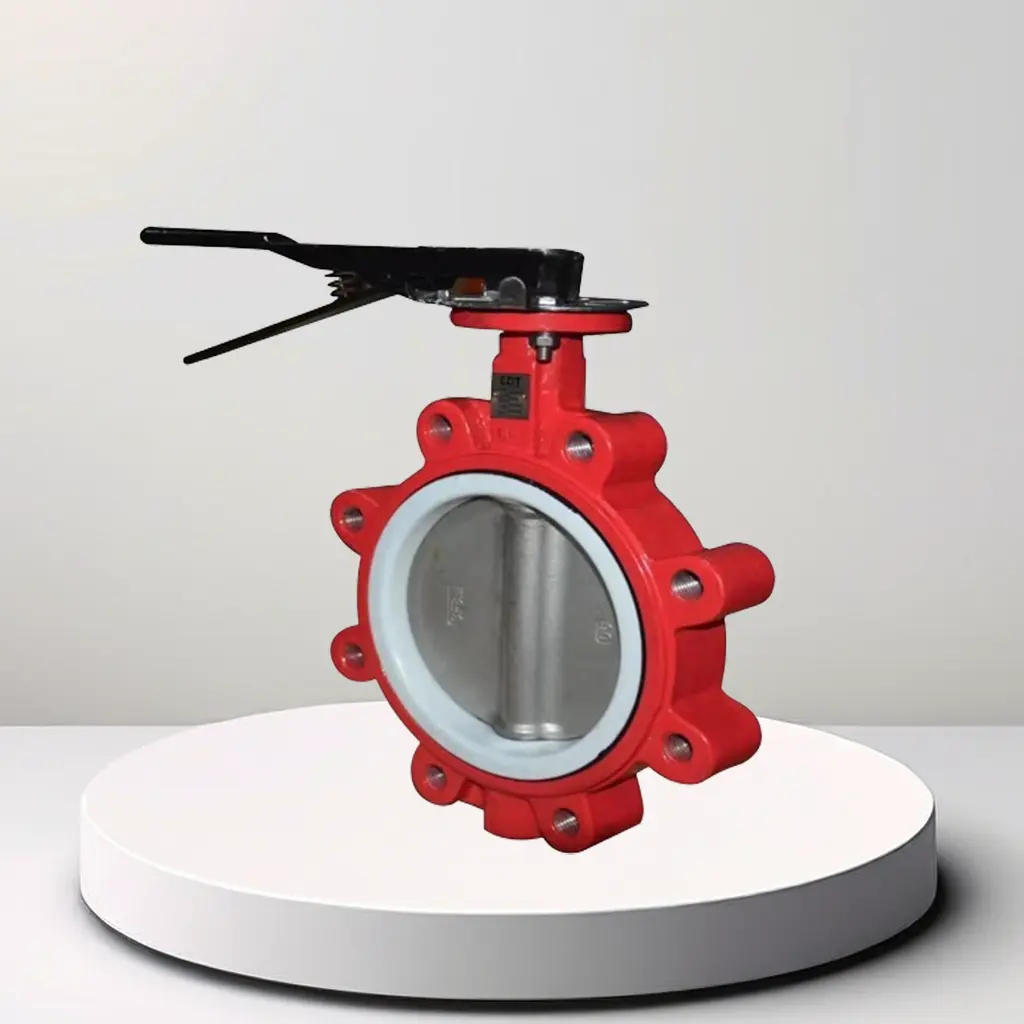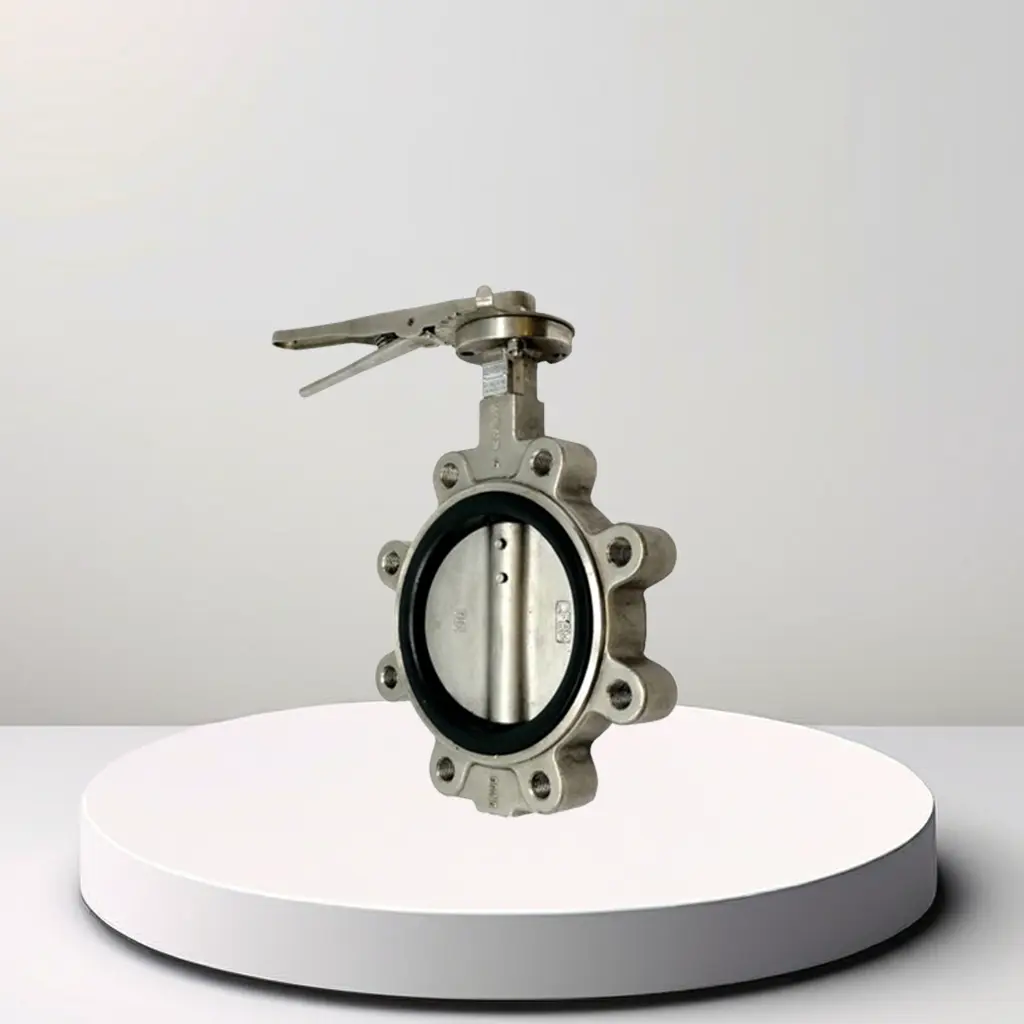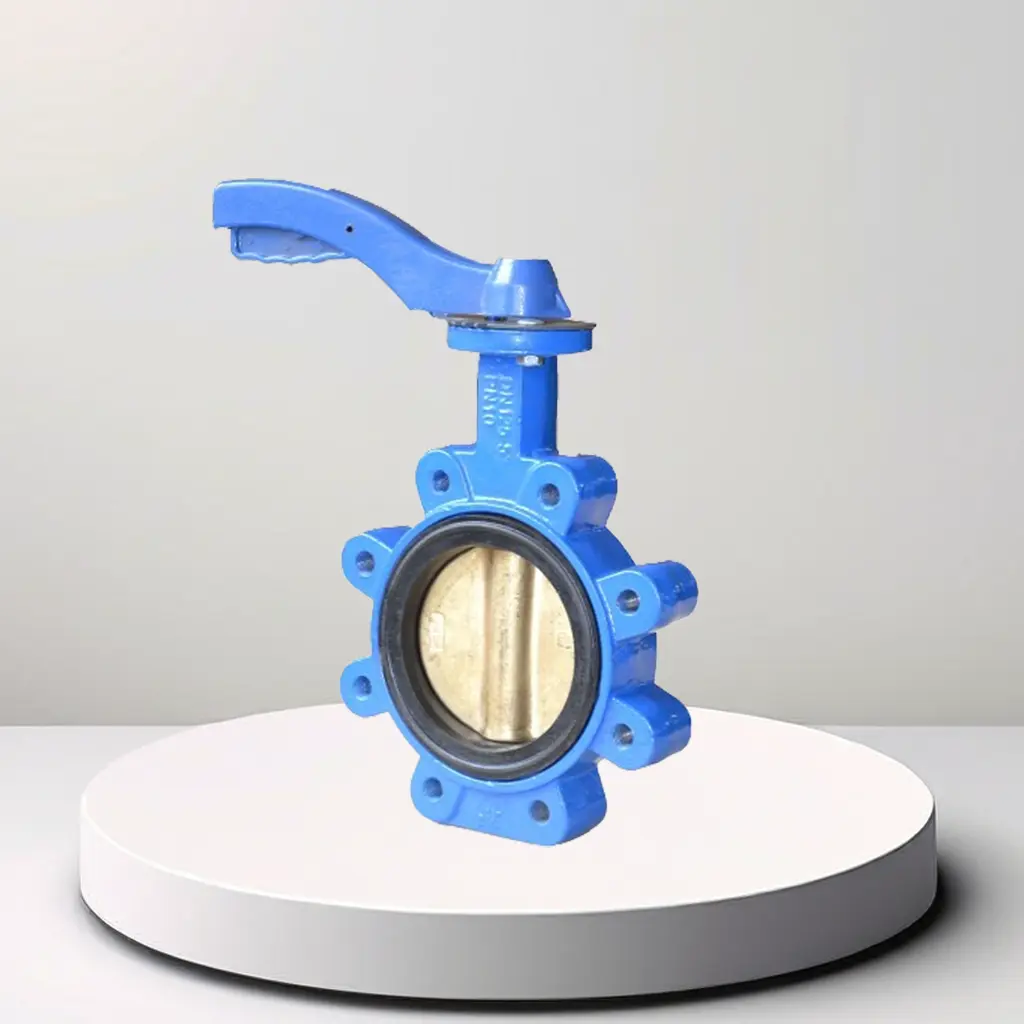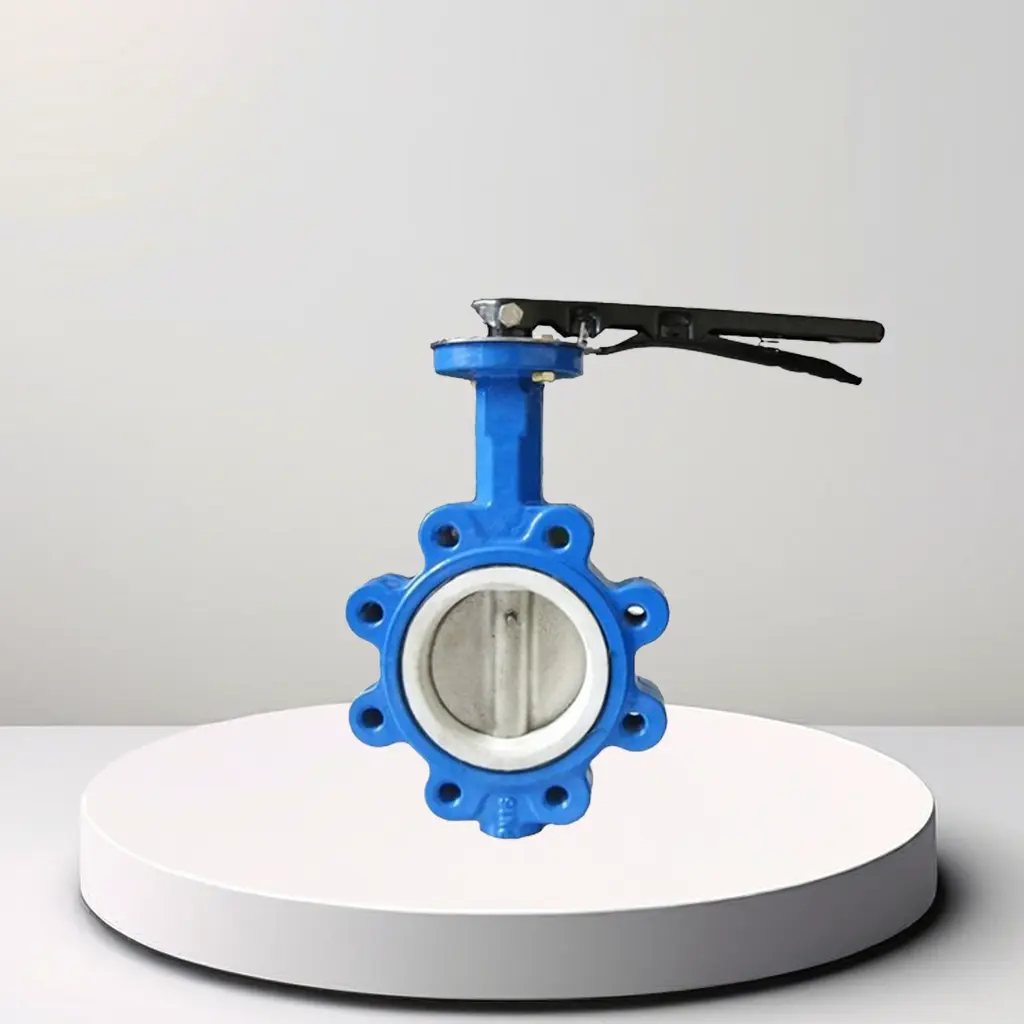Product Description
Components and Materials
1. Iron Handle:
- Material: Made from durable iron, ensuring strength and longevity.
- Design: Typically lever-operated, allowing for manual control. The handle may include a locking mechanism to secure the valve in a specific position.
2. Valve Body:
- Material: Often constructed from cast iron or ductile iron, providing excellent mechanical strength and durability.
- Lug Type Design: Features lugs (protruding ears) that align with bolt holes in the pipe flanges. This design allows the valve to be securely bolted into place.
3. Disc:
- Material: Usually made from stainless steel or other robust materials.
- Function: The disc rotates within the valve body to open or close the flow path. When the handle is turned, the disc pivots to control fluid flow.
4. Seat:
- Material: Made from PTFE (Polytetrafluoroethylene), commonly known as Teflon. PTFE offers excellent chemical resistance and low friction.
- Design: The PTFE seat lines the inner surface of the valve body where the disc contacts when closed, ensuring a tight, leak-free seal.
Features
- Corrosion Resistance: The combination of iron and PTFE materials offers excellent resistance to corrosive environments.
- Sealing: The PTFE seat provides a reliable, bubble-tight seal, making the valve suitable for applications requiring zero leakage.
- Ease of Operation: The lever-operated iron handle allows for straightforward manual control.
- Maintenance: The lug type design facilitates easy installation and removal, enabling maintenance without disturbing the entire piping system.
Applications
- Industrial: Ideal for chemical processing, petrochemical, and pharmaceutical industries due to its resistance to aggressive chemicals.
- Water Treatment: Used in municipal water supply systems and wastewater treatment plants for regulating water flow.
- HVAC Systems: Commonly employed in heating, ventilation, and air conditioning systems for controlling air flow.
- Food and Beverage: Suitable for hygienic applications due to the non-reactive nature of PTFE.
Installation
- Lug Type Installation: The valve is mounted between two pipe flanges. Bolts pass through the lugs and flange holes, securing the valve. This design allows for one side of the valve to be disconnected while maintaining the other side intact, making it convenient for maintenance and repairs.
Advantages
- Durability: Iron construction provides robustness, while PTFE seats ensure longevity with minimal wear and tear.
- Versatility: Suitable for a wide range of applications due to its chemical resistance and reliable sealing capabilities.
- Maintenance-Friendly: Easy to install, remove, and maintain, reducing downtime and operational costs.
Conclusion
An iron handle PTFE seat lug type butterfly valve is a critical component in various industries, offering reliable performance, excellent sealing, and resistance to harsh environments. Its design and materials make it a preferred choice for applications requiring precise flow control and durability.
